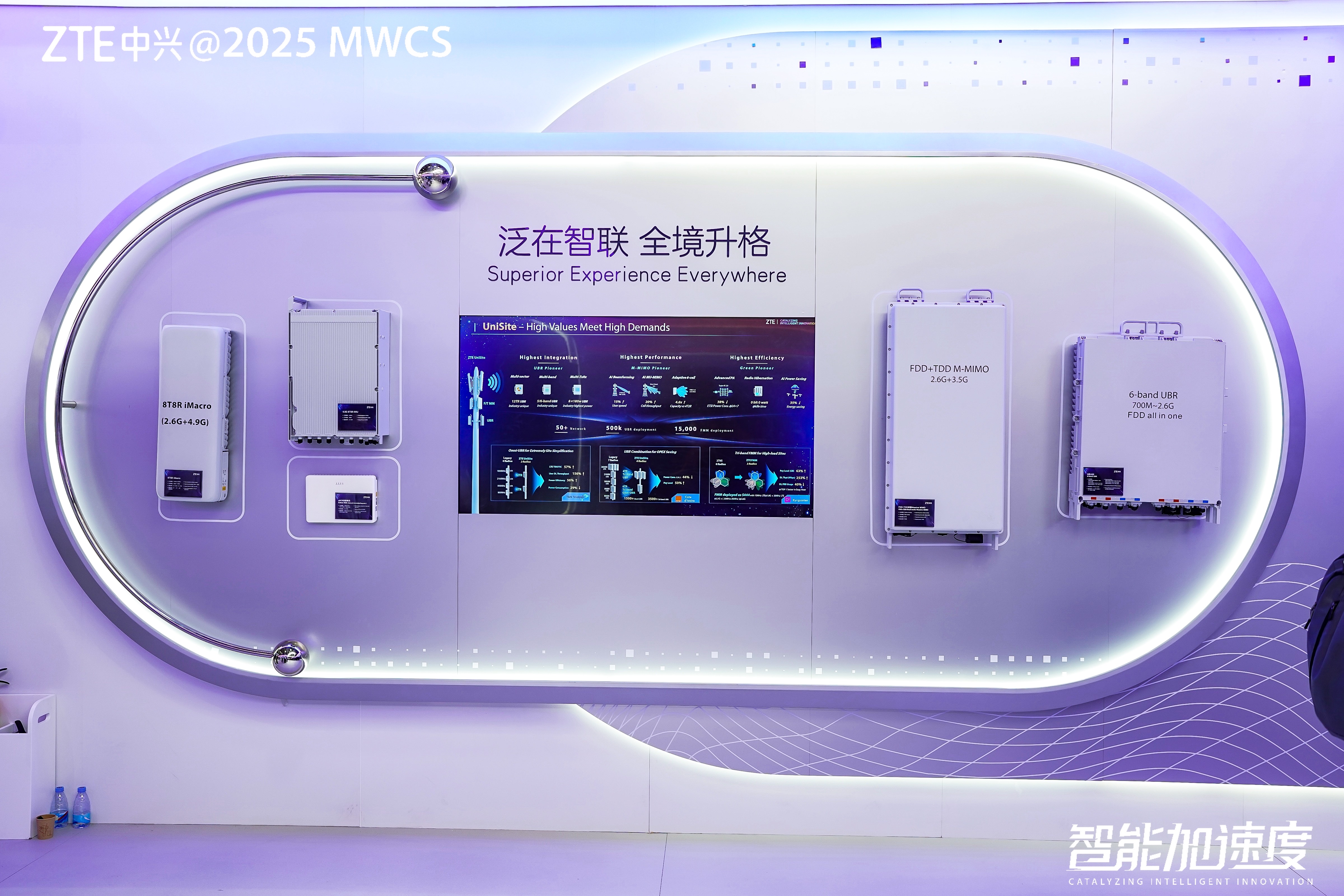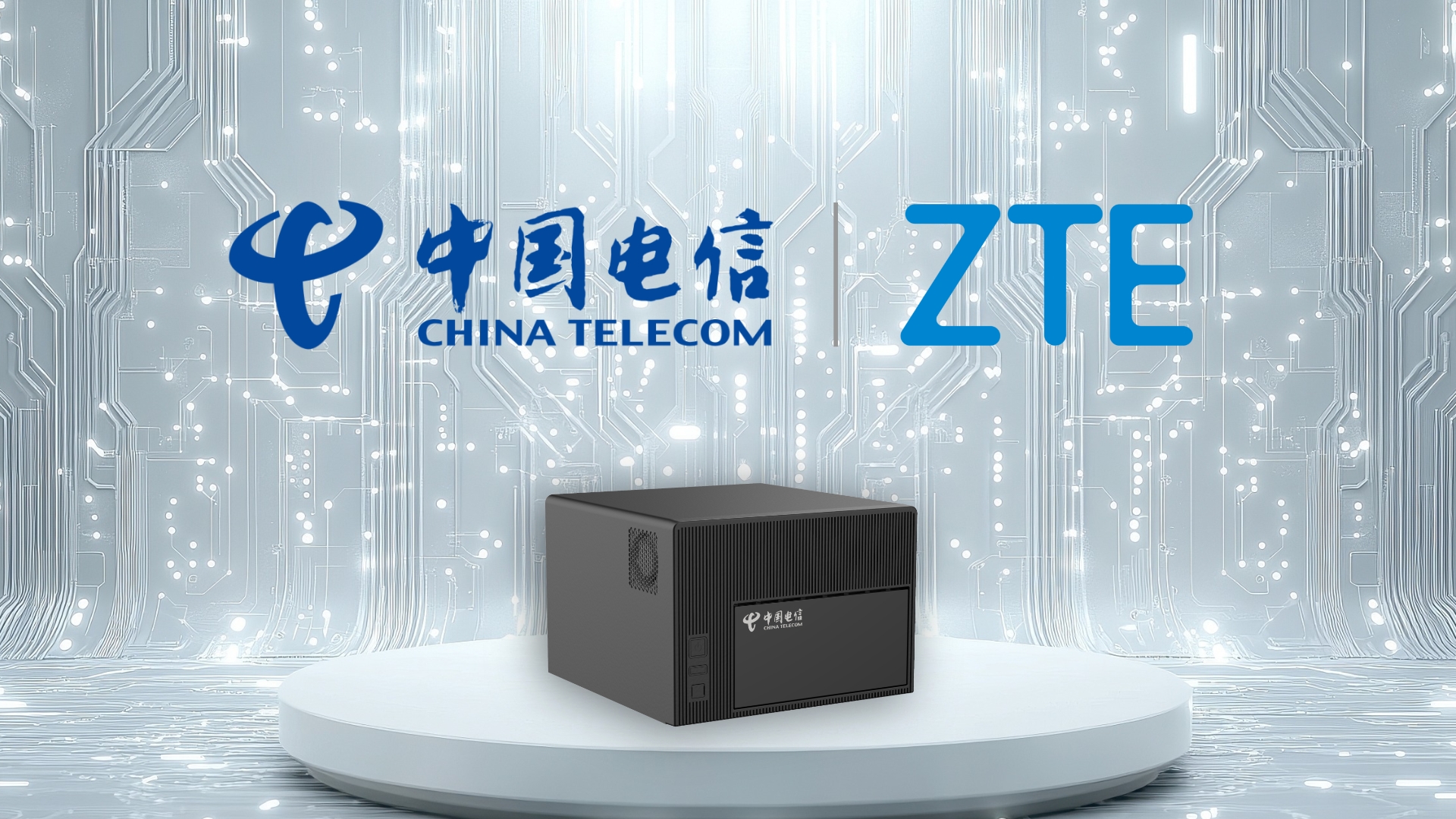ZTE showcases innovative radio access network solutions to advance 5G deployment and accelerate intelligent connectivity at MWC Shanghai 2025
- Leveraging UBR and M-MIMO pioneer solutions, ZTE helps operators cover more bands with fewer radio units, boosting capacity while reducing space and costs
- ZTE offers diversified solutions to enhance user experiences by delivering ultra-fast uplink speeds, high-capacity indoor coverage, and extended signal reach in challenging areas like elevators and parking lots
- ZTE AIREngine enables RAN with native-AI capabilities for optimizing network performance and user experience, energy efficiency, and operation efficiency

Shanghai, China, 20 June 2025 – ZTE Corporation (0763.HK / 000063.SZ), a global leading provider of integrated information and communication technology solutions, has demonstrated a comprehensive suite of innovative products and solutions for radio access network at MWC Shanghai 2025. These advancements are designed to empower global operators in deploying 5G networks featuring full-band coverage, streamlined site deployment, premium user experiences, and deep AI integration – accelerating the transition toward an intelligent, all-connected era.
Streamlined Site: Reduced Space Occupation, Enhanced Network Capacity
Addressing challenges including fragmented spectrum, limited tower space, and high operation costs, ZTE's UBR pioneer achieves site simplification through advanced multi-sector, multi-band, and multi-channel integration. The tri-sector Omni-UBR enables modernization across five FDD bands using only two radio units, while the industry's first 6-band UBR covers all Sub-3GHz spectrum. And the tri-band 8T8R UBR delivers industry's highest output power to significantly boost network capacity.
ZTE's M-MIMO portfolio maximizes spectral efficiency. The industry's first FDD and TDD dual-band M-MIMO supports high-capacity 5G evolution, and the FDD tri-band M-MIMO featuring the industry's highest output power, is ideal for ultra-high traffic sites, effectively unleashing suppressed data traffic. The innovative single-sector 6-beam solution, combined with site-level AI capabilities, enables adaptive beam adjustment through multi-dimensional cell evaluation in time, frequency, and spatial domains, achieving a capacity increase that leads the industry by 20%.
Extreme Experience: Inspiring Values across All Scenarios
Responding to surging uplink bandwidth demands from AI terminals, autonomous driving, and embodied intelligence applications, ZTE's uplink 3-carrier aggregation (3CC CA) technology unlocks spectrum potential. During the event, ZTE and China Mobile demonstrated this solution on commercial mid-band, achieving uplink speeds exceeding 865Mbps.
For high-capacity venues including high-speed rail stations, stadiums, and service centers, plus specialized environments like VR experience club and mobile media production, MiCell, ZTE's millimeter-wave indoor coverage solution, delivers over 6Gbps downlink capacity per cell and over 2Gbps uplink per user, supporting concurrent high-bandwidth, low-latency services.
For weak-coverage spots such as residential elevators, underground parking lots, and urban villages, ZTE's qNCR (Network Controlled Repeater) extends 4G/5G signals without requiring BBU, RRU, or fiber. A single qNCR unit covers multiple elevators or 5,500m² underground spaces. This solution has been widely deployed in China.
Deep AI Convergence: Building a Future-Proof Foundation
The deep convergence of mobile network and AI is pioneering new service paradigms. ZTE's AIR RAN solution leverages heterogeneous computing, with the AIREngine—a BBU-embedded computing board—as its intelligent core. By integrating digital upgrades across antenna, transmission, and power systems, it transforms legacy RAN into an AI and RAN deeply integrated intelligent infrastructure.
For antenna systems, the Smart Beam-Tracking Unit delivers topology visualization, information sensing, flexible beam adjustment, and dynamic array optimization capabilities, precisely enhancing coverage while reducing OPEX. In transmission system, OTDR SFP transceiver modules enable real-time fronthaul fiber monitoring and rapid fault localization, significantly improving O&M efficiency. Energy system upgrades with the green Site Digital Units (gSDU), supporting smooth RF unit shutdown during low-traffic periods and intelligent wake-up, achieving "Zero Bit, Zero Watt" operation.
Building upon digitalized and intelligent sites, ZTE introduces network AI service agents. Leveraging base station's native-AI capabilities, including intelligent service identification, data analytics with deep learning, and granular resource orchestration with service assurance, these agents empower operators to optimize user experiences, energy efficiency, and O&M effectiveness, fully unlocking the network value.
Li Xiaotong, Vice President of ZTE, stated, "Advanced 5G networks serve as the engine for digital economy. ZTE is dedicated to strengthening partnerships with global operators and ecosystem collaborators to develop mobile networks with streamlined full-band sites, premium experiences across all scenarios, and deep AI convergence, laying a robust foundation for a digital and intelligent future."



